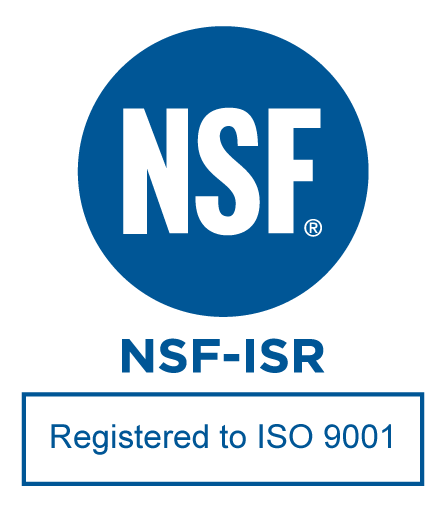When Selecting Air Cylinders, Don’t Overlook Chemical Compatibility — Part 2

In our last blog post, we discussed how important the body construction of a pneumatic cylinder is to chemical compatibility in harsh environments. Now, continuing this series, we will detail material considerations for internal components, such as pistons, bearings, bushings and seals.
In the second blog post of this series, we delve into the chemical compatibility considerations of an air cylinder’s body materials.
Internal Component Materials
Pistons. Many pistons and shafts are constructed from stainless steel with hard chrome plating.
Nonmagnetic hard chrome-plated surfaces feature a low coefficient of friction, hardness between 65 to 70 Rc and low wettability. Hard chrome resists citric acids, nitric acids, sodium chloride and copper sulfates. However, hydrochloric acid, sulfuric acid, aqua regia and hydrofluoric acid can damage the material. Another piston material, brass, may be appropriate if the cylinder will be used with or near neutral and non-corrosive chemicals.
Bearings and bushings. Bearings can be constructed from nylon, polytetrafluoroethylene (PTFE) or brass. Advantages of nylon include good mechanical and compressive strength, the ability to absorb shock and good resistance to alkali, most salt solutions and weak acids. If using nylon, do not expose it to moisture, high temperatures, ultraviolet (UV) light and strong acids or oxidants. Duralon® is a typical nylon variant found in bearings. It can be engineered for exceptional strength, and impact, flame and corrosion resistance. Duralon also acts as a good insulator.
PTFE — or Teflon® — is a popular non-stick plastic that is non-reactive and can resist many organic solvents, depending on the temperature and pressure. Teflon features high flexibility, a wide temperature range and is safe for food processing equipment. PTFE can emit toxic fumes when overheated and exhibits low radiation resistance.
Bronze offers strength, ductility and machinability. While bronze’s outer layer oxidizes when exposed to air, it protects the metal below from corrosion. However, chlorides, such as from seawater, can cause severe damage. Remember that bronze bushings may be oil permeated or oil filled as well as sintered.
Seals. Nitrile rubber and Viton® are two elastomers widely used to manufacture seals. Nitrile (acrylonitrile butadiene) rubber properties can vary depending on the composition. It offers high tensile strength, as well as resistance to water, non-polar solvents and a wide range of oils, fuels, alcohols, hydraulic fluids and silicone greases.
Viton (FKM) is well-known for its resistance to fluids and its compatibility with oils (lubricating, hydraulic and fuel), kerosene, alcohol and diluted acids, as well as halogenated and aromatic hydrocarbons. It can decompose and release toxic hydrogen fluoride at extremely high temperatures and is incompatible with acetone, methyl ethyl ketone and various ester solvents and organic acids.
If you are unsure the materials in your cylinder are appropriate for your application, consult with the manufacturer. At Fabco-Air, we can help you modify a standard cylinder or custom-engineer a cylinder for its intended environment. You can also use our online Configure & CAD Tool to select and configure your own unit.
Read our white paper for more information.

